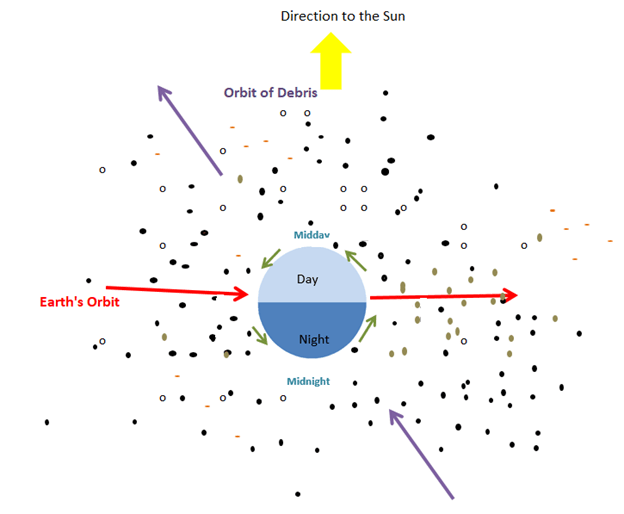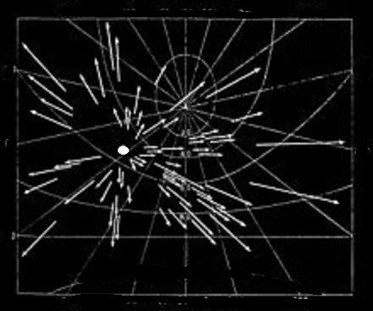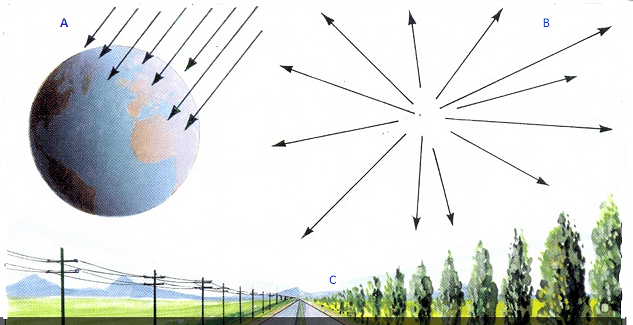The night of 12/13 August will be the peak of the Perseids, one of the most famous prolific meteor showers.

Meteors (also known as shooting stars) are bright streaks of light caused by small lumps of rock or metal called meteoroids hitting the Earth’s atmosphere at very high speed (in the case of the Perseids around 200,000 km/h). As they pass through the atmosphere they get heated up by friction to a temperature of thousands of degrees and start to glow. This causes them to emit a streak of light as they move through the atmosphere. Most meteoroids get heated to such a high temperature that they vaporise at an altitude of 50 km or higher and disappear from view.

Image credit Wikimedia Commons
If the meteoroid is large enough, bigger than a few cm in diameter, some of it can survive the passage through the Earth’s atmosphere and the part that hits the ground is known as a meteorite.
What causes the Perseids?
A comet called Swift-Tuttle orbits the Sun every 133 years. As it orbits, material crumbles away from its surface. Over a long period of time this ejected material has formed a wide elliptical ring in the same orbit as the comet.
At the same time each year, the Earth passes through this ring of debris. When this happens some of the particles hit the Earth’s atmosphere and this is what causes the Perseids meteor shower. The debris ring is fairly wide and the Earth first crosses it in late July and takes until late August to get to the other side. The thickest part of it is encountered around 12 August and this is the date on which the Perseid shower is at its most prolific.

When is the best time to observe a meteor shower?
The diagram below shows the Earth passing through the debris cloud.

In the hours after midnight, an observer will be on the side of the Earth facing towards the Earth’s direction of travel as it orbits around the Sun. As a consequence, the Earth will scoop up more meteoroids as it passes through space. The time of day when the most meteoroids arrive near a location on Earth is actually around sunrise but at that time the brightness of the sky makes them difficult to see. In general, the best time of day to observe the Perseids, or in fact any meteor shower, is the early hours of the morning when the sky is fully dark.
The radiant
If you observe a meteor shower over a period of time, you will notice that if you follow the meteor trails backwards, they all originate from the same place. This is particularly noticeable if you take a series of long exposure photographs and then combine them into a single image. The point in the sky from where the meteors appear to originate is called the radiant.

Image credit Wikimedia Commons
As shown in the diagram below, meteoroids enter the Earth’s atmosphere in parallel paths (A). When these paths are projected onto the two-dimensional dome of the sky then they will all appear to radiate from a particular point (B) in the sky. This point is the radiant. This is analogous to looking at along a straight road (C), the road, trees running parallel to it and structures such as power cables all appear to converge at a point in the distance.

The Perseids’ radiant lies in the constellation Perseus, which gives the shower its name.

Some tips for seeing the Perseids in 2021
2021 should be a good year to view the Perseids, unlike 2019 and 2020, there is going to be no Moon in the early hours of the morning, which means of course that the sky will be darker.
- Choose a place where the sky is as dark as possible. As most meteors are faint, you will see far more against a dark sky.
- Meteors can appear over a wide area and be seen well away from the radiant. So your viewing point should cover as a large an area of sky as possible and shouldn’t be obscured by trees or buildings.
- It is better not to view through a telescope or binoculars (unless you’re using low magnification ultra-wide angle binoculars). The area of sky covered will be small and statistically you will be unlikely to see many meteors.
- Check the weather forecast beforehand (apologies if this is too obvious ! 😊 ). If it’s forecast to be cloudy on the night of the 12/13 August where you live then it might be worth trying to observe a day or so earlier.
- Set yourself up in a comfortable position looking high into the sky in a north-easterly direction and, because meteors are not predictable, you will need to wait patiently for at least an hour or so. Hopefully you’ll be lucky and see some meteors!!

The Zenithal Hourly Rate (ZHR)
When astronomers measure the strength of a meteor shower, they use a term called the Zenithal Hourly Rate (ZHR). The ZHR is the maximum number of meteors a naked-eye observer would see per hour if the sky were completely dark, there were no cloud cover and the radiant were directly overhead. The diagram below shows how the ZHR varied with date for the Perseids in 2016.

And finally….
A video on meteor showers in general is available on the Explaining Science YouTube channel

It’s been pretty cloudy where I live for several nights. There’s a chance that it might clear up a bit tonight. I’ve seen the Perseids before, so I’m not too bummed out about it, but it would be nice to see them again.
LikeLike
Hopefully you managed to see them
LikeLiked by 1 person
Sadly, no. I headed out to my favorite stargazing spot, but shortly after I arrived I heard thunder. There’s always the next meteor shower, though!
LikeLike
The Perseids are one of the best meteor showers in the South West! Although rather difficult to see with the light pollution, you can just about see them from some of our beaches!
LikeLike
I hope you get a clear night.
LikeLiked by 1 person
I suppose the fine weather will break down as usual when there is something interesting to see. But fingers crossed!
LikeLike
You never know we might be lucky this year.
LikeLike
Rainy season here and it’s most likely be cloudy. I hope for a few hours at least it will be clear for me to witness something. Nice post btw!!
LikeLike
This year…..please pretty please clear skies in Perthshire!
LikeLike
yes hopefully you’ll get clear skies.:-)
You are very lucky to live in such a beautiful part of the world !!
LikeLike
[…] For revised post containing more tips on how to view the Perseids see The Perseids 2021. […]
LikeLike
[…] For revised post containing more tips on how to view the Perseids see The Perseids 2021. […]
LikeLike
[…] For revised post containing more tips on how to view the Perseids see The Perseids 2021. […]
LikeLike
[…] For revised post containing more tips on how to view the Perseids see The Perseids 2021. […]
LikeLike